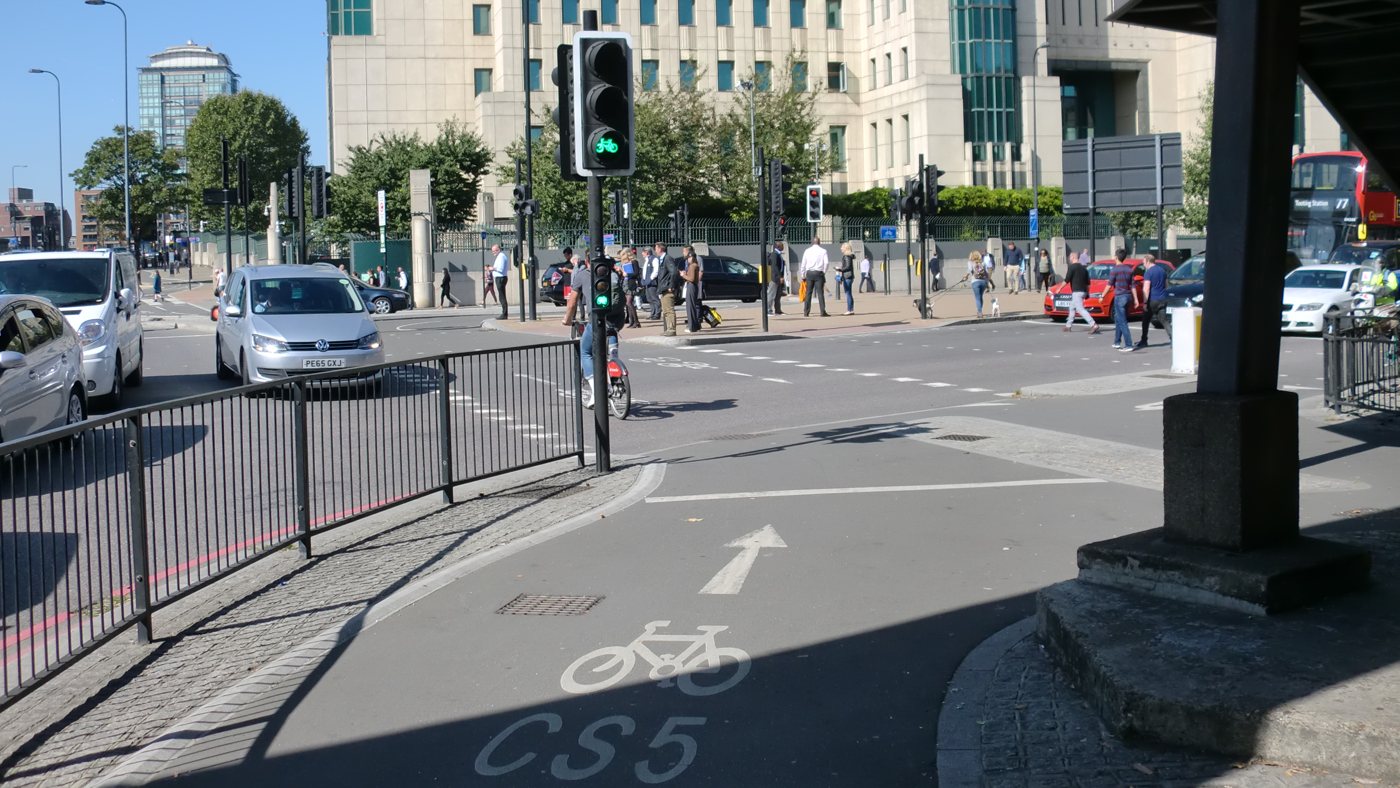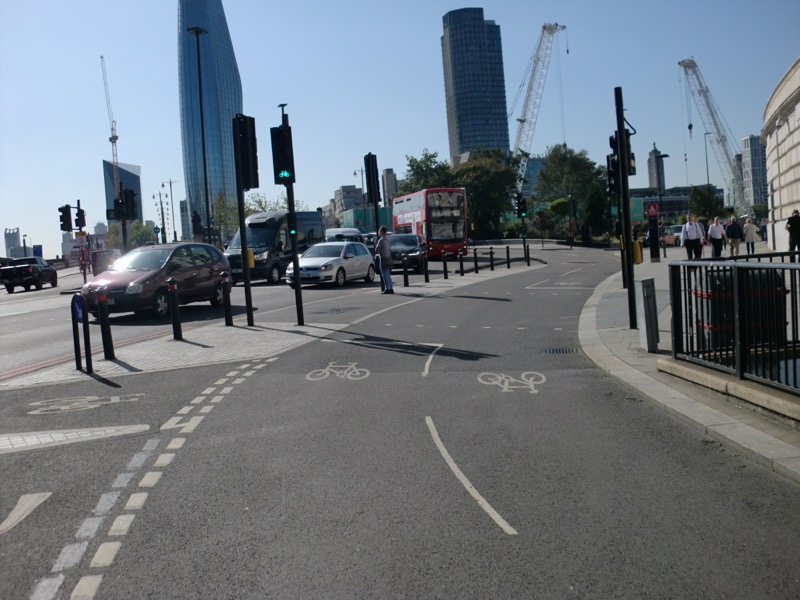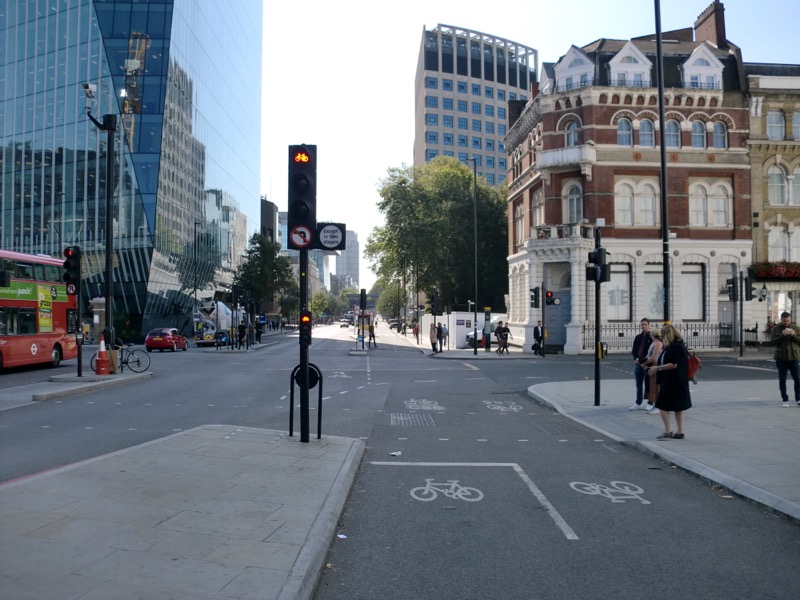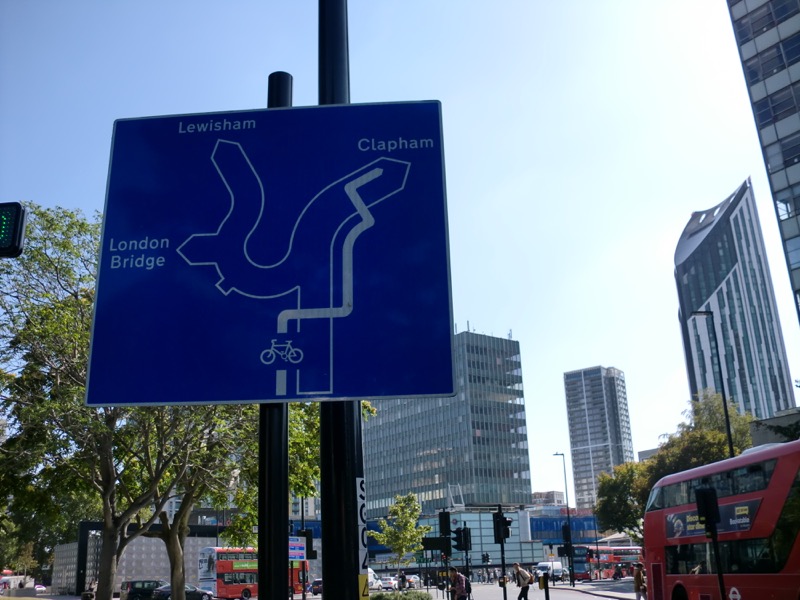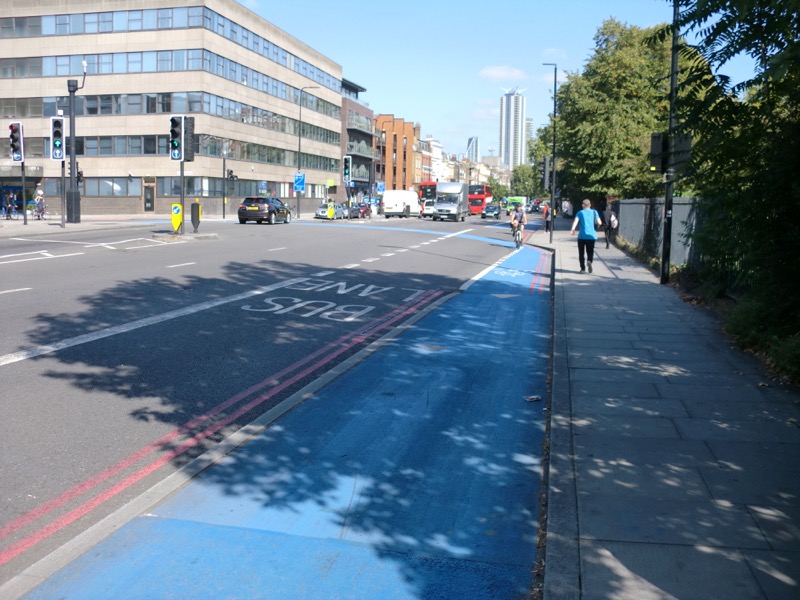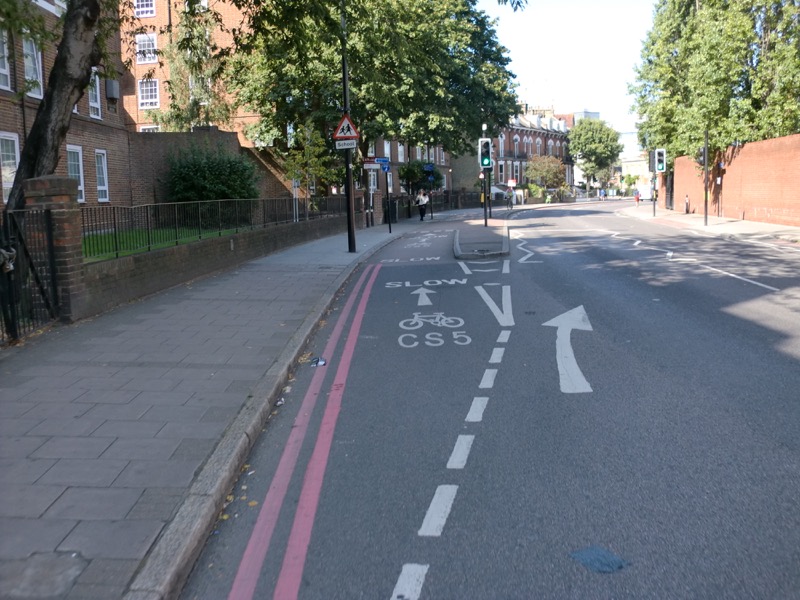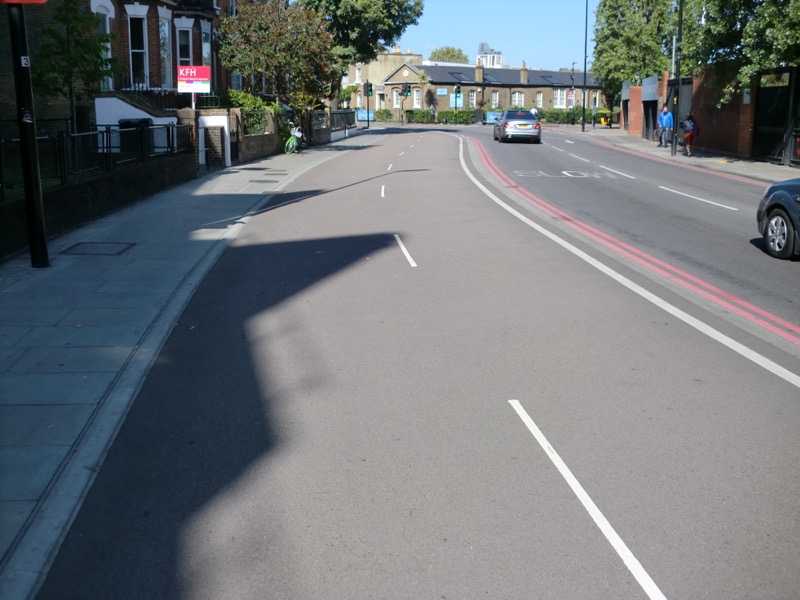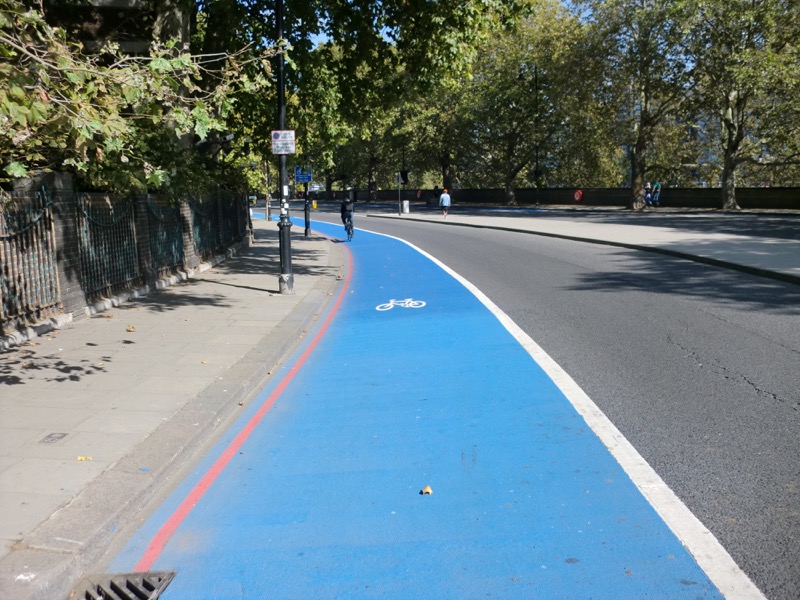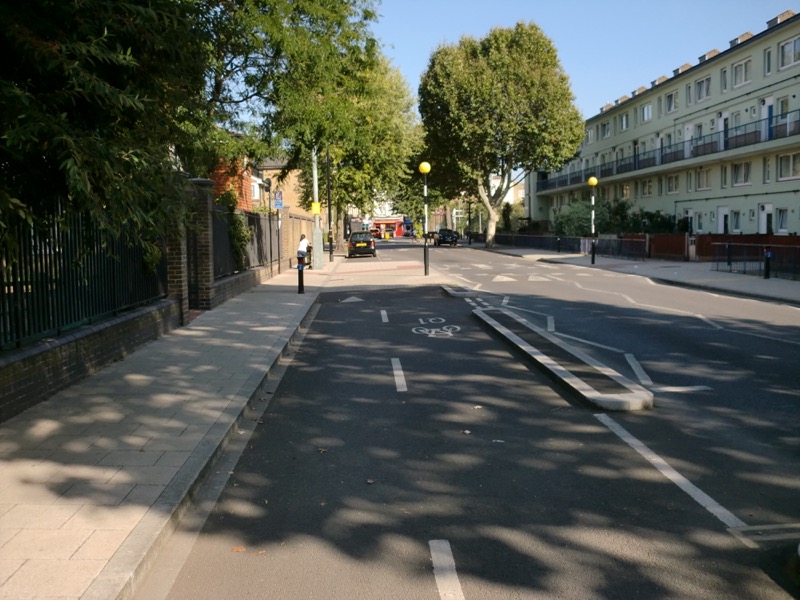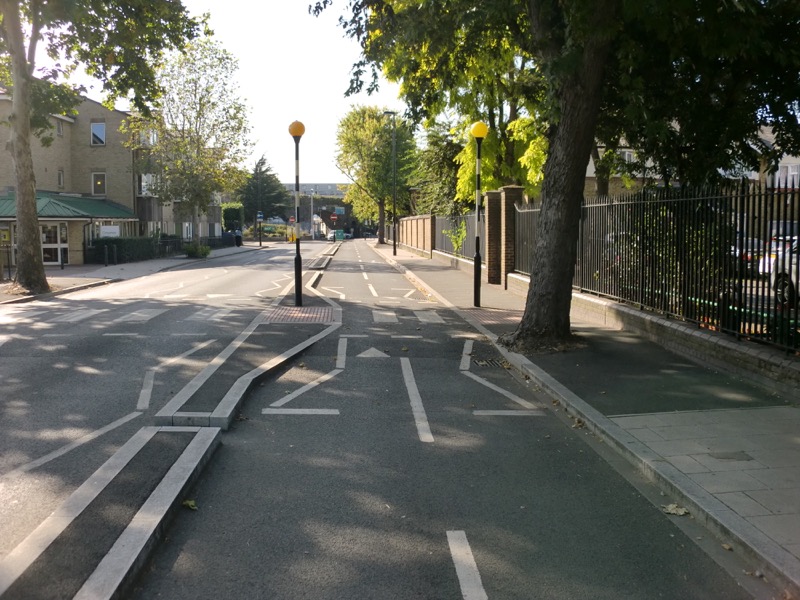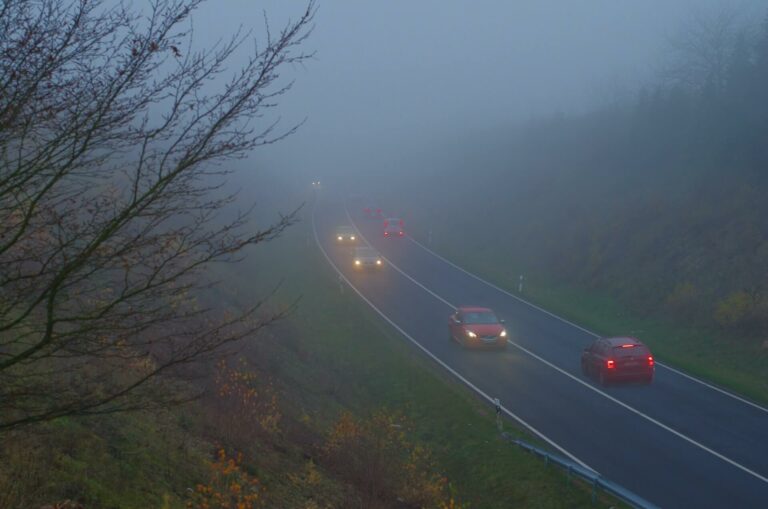There has been a big push in recent years to increase the number of cyclists in UK cities. There are a number of reasons behind this push including aiming to reduce emissions and to attain healthier communities, but whilst the motive for increasing the number of cyclists may change, one thing that does not change is one of the key actions required to increase the number of cyclists –the provision of safe, direct and purpose-built infrastructure.
Safe & Direct
Given the variety of transport modes in most cities in 2019, providing cycling infrastructure is no longer as easy as narrowing the carriageway and providing a simple painted cycle lane adjacent to traffic. We are now routinely seeing highway environments designed with cyclists and pedestrians segregated from each other by a kerb, and also physically segregated from adjacent vehicular traffic. One method of accommodating all three road users is through the reallocation of road space to provide three adjacent highway environments comprising of; a footway, a segregated cycle lane and road space for vehicles as shown in Figure 1 below.
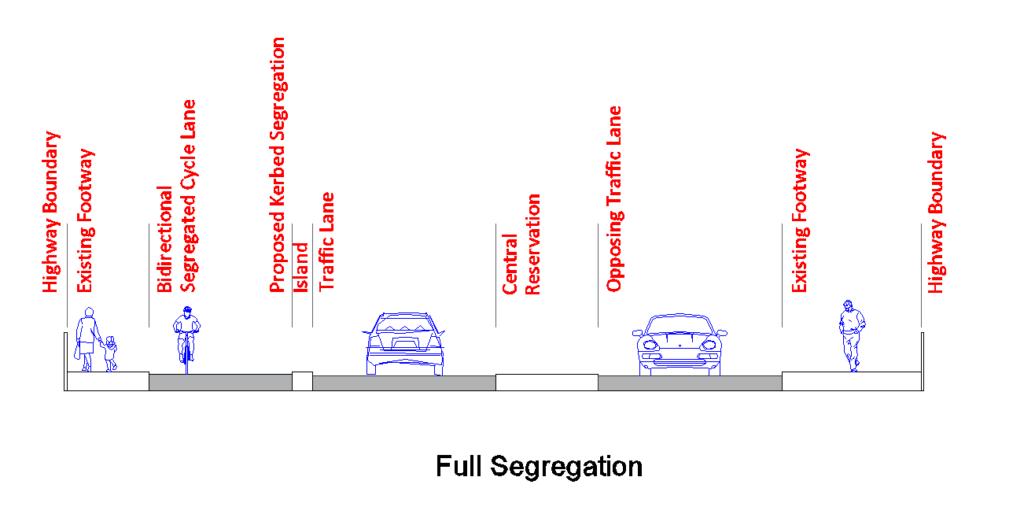
A segregated cycle lane provides a facility where cyclists can travel adjacent to major distributor roads in cities but away from traffic meaning cyclists can feel safe whilst also travelling on a direct routes to their destination. There are numerous methods of segregating cyclists from vehicular traffic.
These include a continuous kerbed island, planted flower beds, or bollard segregation and whilst each segregation method has its benefits, one example from Manchester shown below in Photo 1 demonstrates that segregation can be achieved through low level kerbed islands placed at regular intervals.
This method of segregation is cheaper than a continuous border, more practical than a planted flower bed and acts as a permeable barrier allowing cyclists to join and leave the cycle lane as they please, whilst also providing the necessary divide between cyclists and vehicles.
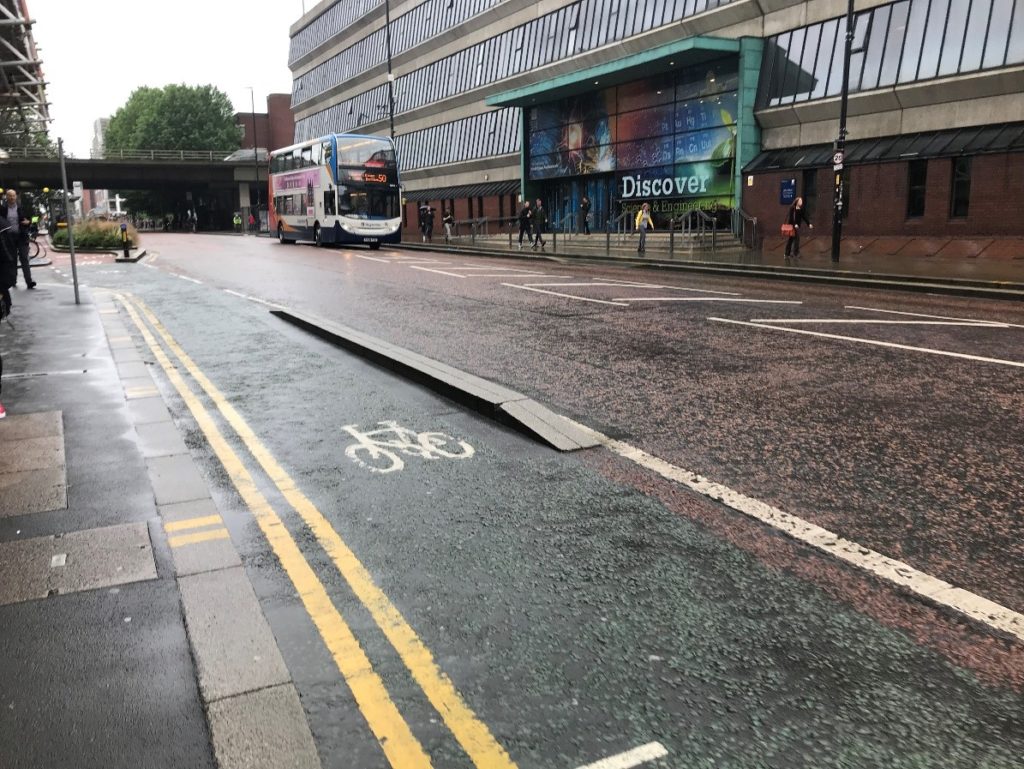
Mitigating conflicts
It would be impossible to run a continuous segregated cycle lane along a city centre distributor road avoiding any conflicts. Signal junctions, side roads, parking bays and bus stops all interact with segregated cycle lanes and there are various innovative designs available to address these conflicts.
Bus stop bypass: To maintain a continuous cycle route, a cycle lane can run behind a bus stop as shown in Photo 2 below. As part of a bus stop
Low-level cycle signals & early start for cyclists
At large signal junctions cyclists can be separated from vehicles by being provided with a designated signal stage, which is signalled by cycle specific traffic lights. This is conjunction with the provision of low-level cycle signals provides a facility which can continue to keep cyclists separate from vehicles.
A prime example of this is shown in Photo 3. Low-level cycle signals similar to those in Photo 3 can also be used as a standalone feature at signal junctions. The low-level cycle signals can signal a small green signal to allow cyclists a head start to clear the junction before the main traffic stage begins. This treatment offers cyclists extra protection at signal junctions by reducing conflict with vehicles and also gives a positive message to cyclists that they have been properly considered and are a legitimate road user.
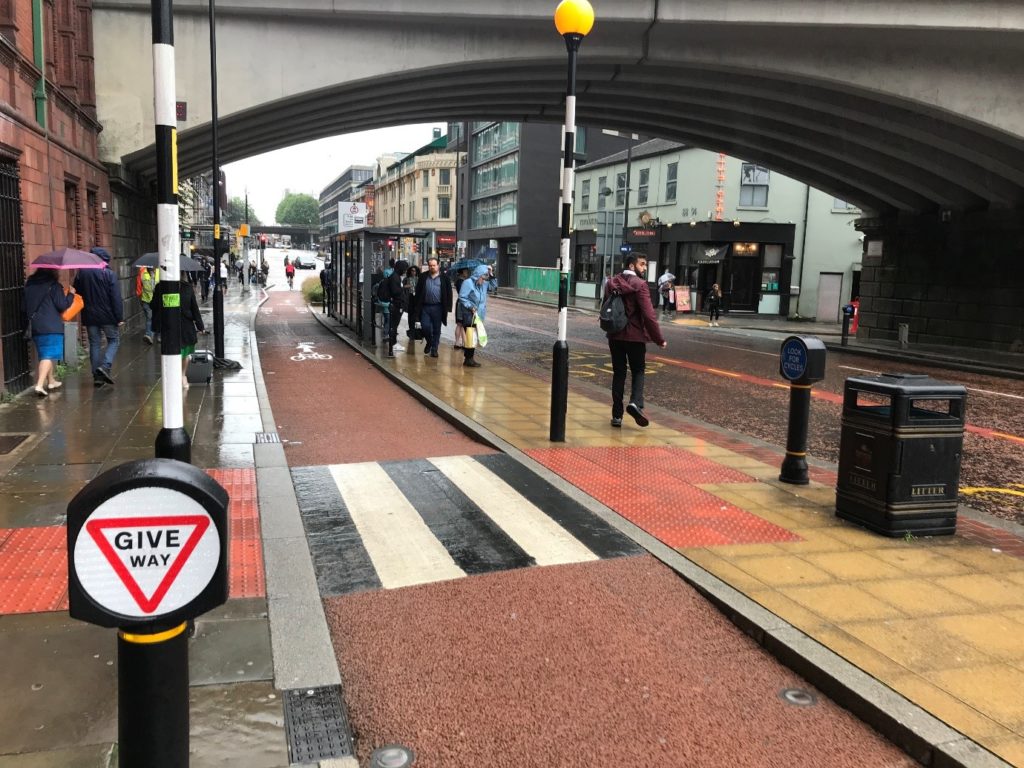

Nationwide Picture
London is the place in the UK where we’ve seen the largest increase in the provision of cycle facilities, especially in central and inner London, and Figure 2 below shows that cycling in the centre of the capital has increased 7 fold over the last 20 years.
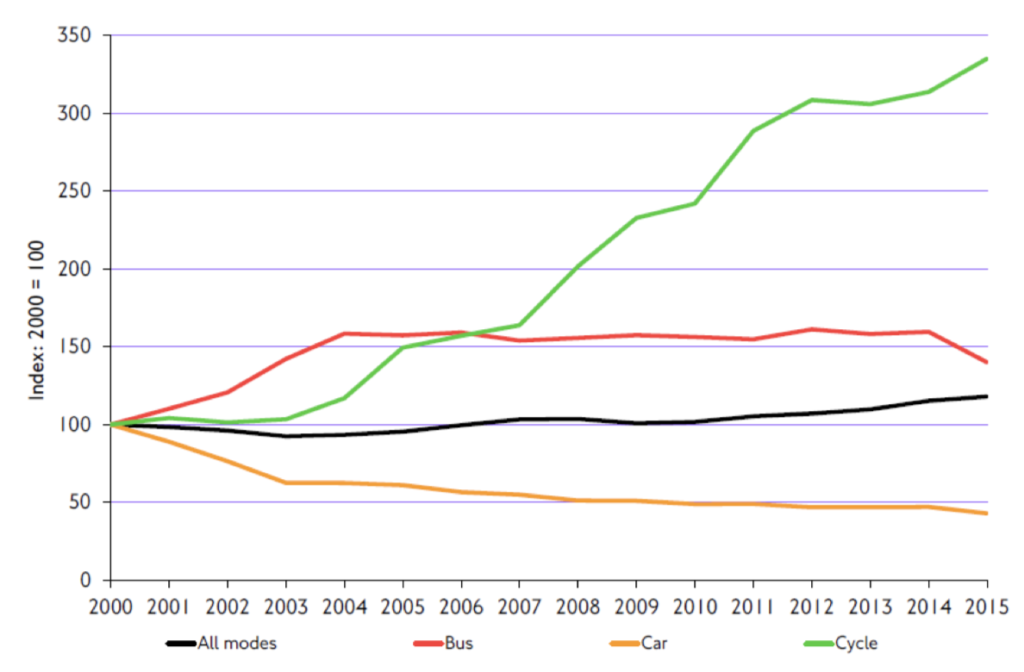
The graph above showing the increasing number of cyclists in London, and that this increase seems to correlate with the increasing number of safe purpose-built facilities being provided. This is a point that should be considered nationwide. Often, especially in cities, cycling is the quickest way to make a journey. If cycle facilities are provided to reflect this, cycling and other forms of active travel will quickly become the most favoured method of travel in our city centres.
As outlined above, there are numerous innovative cycle treatments that can be provided in cities to achieve safer and more effective cycle routes. The current trend has seen the UKs largest cities providing networks of segregated cycle routes, which provide a facility for cyclists to travel alongside major city centre roads comfortably and away from traffic, making cycling as a method of travel a more attractive option.
Whilst certain treatments such as a segregated cycle route will not be appropriate at all locations, and other treatments may not be economically viable away from city centres, it is the provision of purpose-built infrastructure that will actively achieve the goal of increasing the number of people cycling nationwide.
Members of the engineering team at Local Transport Projects recently made a trip to London to view the extensive and varied cycle facilities provided in central London, including some of the measures mentioned above. This visit was extremely productive and provided the engineers with inspiration on various cycle treatments, and allows Local Transport Projects to continue to design innovative purpose-built cycle across the country. A gallery of images is provided below:



